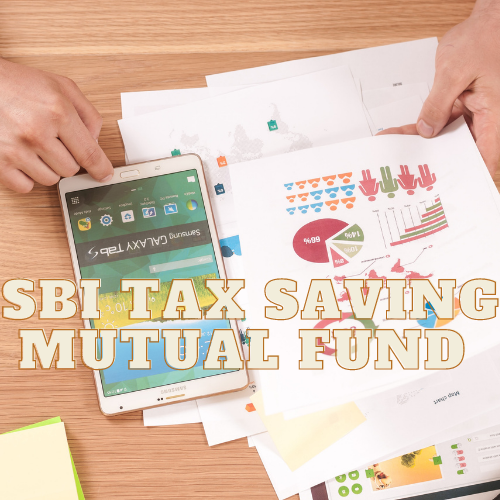SBI tax saving mutual funds is diversified equity funds that help you build long-term wealth while minimizing taxes. These SBI tax saving mutual funds have a three-year lock-in period and are intended for investors with higher risk tolerance.
ELSS SBI tax saving mutual fund is a form of mutual fund that allows you to deduct your investment from your taxable income. ELSS, covered under Section 80C of the Income Tax Act, 1961, will enable you to save up to 1.5 lakhs in taxes per year. However, if you invest more than 1.5 lakhs, you would not be eligible for Section 80C tax benefits.
Traditional tax-saving devices often give fixed returns and do not consider the substantial inflation that exists in our economy. For example, assuming a 6% inflation rate, fixed-yield investments promise a return of 8%, but your real return would be only 2%.
SBI tax saving mutual funds, on the other hand, invest in stocks and hence have the potential to yield more significant inflation-adjusted returns over time. Therefore, if you invest in ELSS for the long run, it can help offset the short-term volatility of stocks. Moreover, you don’t have to worry about market timing because professionals handle these tax saving mutual funds SBI.
Also Read: Top 10 Startup Companies in Hyderabad
What is Tax Saving Mutual Funds SBI?
Tax saving mutual funds SBI is a mutual fund like any other, with the added benefit of tax savings. The tax saving mutual funds SBI have the unique attribute of being eligible for tax advantages under section 80C of the Indian Income Tax Act. Most SBI tax saving mutual funds are ELSS programs that participate in the growing stock market.
What is the function of SBI Tax Saving Mutual Funds?
When a person invests in a mutual fund, the money goes into the pool. The fund’s portfolio corpus is then invested in the equity market so that even if one investment loses money, the other manages to offset the loss. A breakup of an investment in a certain fund might look like this:
- Automotive industry – 6.56%
- Banks – 17.56%
- Consumer durables – 5.34%
- Consumer non-durables – 5.66%
- Power – 5.92%
- Software – 8.93%
- Pharmaceuticals – 9.99%
The table above illustrates how a tax saving mutual funds SBI allocates its assets to market securities. It means that 6.56 percent of the money will go to the car industry and 17.56 percent to banks and other financial institutions.
ELSS schemes often have a three-year lock-in term, which implies that the investment cannot be withdrawn until the maturity period has passed. Each installment has a three-year lock-in term if you invest in periodic monthly installments (SIP). If the first investment was made on January 1, 2015, and the second on February 1, 2015, the first installments will be released on January 1, 2018. However, the second installment will be unavailable until February 1, 2018.
Only the unlocked units of the fund are redeemable at the current NAV price. When an investor redeems a team, the NAV, or Net Asset Value, is the amount received. To make withdrawals, you’ll need to know how many units are available under the program and fill out a claim form with the mutual fund provider. As soon as the transaction is completed, they will credit your account.
Also Read: PNB PPF Interest Rate
What are the steps to investing in Tax Saving Mutual Funds SBI?
To learn how to invest in tax saving mutual funds SBI, follow these simple steps.
- You might want to visit ClearTax invest.
- Then, you choose the SBI tax saving mutual fund from the list of fund houses.
- Select the mutual fund scheme you want to invest in and click Invest Now.
- You can choose between a One-Time or Monthly SIP for the amount you want to put into the mutual fund scheme.
- Then you fill in the necessary information, such as your email address and phone number, and complete the transaction.
Advantages of ELSS Tax Saving Mutual Funds SBI
Tax saving mutual funds SBI offers a lot of advantages to investors. So here are some of the most crucial are as follow:
- Shortest: Compared to other Section 80C tax saving tools, ELSS has the shortest lock-in period of three years. PPFs have a 15-year maturity, while tax-saving FDs have a 5-year lock-in period. As a result, ELSS gives you more options in the medium run.
- Higher potential returns: ELSS mutual funds provide much larger returns than other tax-saving vehicles since they invest in the stock market.
- Higher after-tax returns: Long-term capital gains from ELSS mutual funds up to Rs. 1 lakh per year are tax-free, while gains over Rs. 1 lakh are taxed at 10%.
- Allow you to make money: The money you earn from your ELSS investment can be used to achieve your financial goals. You can utilize your ELSS investments to achieve goals at different times of life, such as building a retirement fund, saving for your child’s education, purchasing a car, or putting a down payment on a home.
ELSS Advantages versus Regular Tax Saving Options
| Instrument | Safety/Risk | Lock-In (Years) | Returns | Tax-Free Gains |
| SCSS (Senior Citizens Saving Scheme) | Low Risk | 5 | 7.4%^ | No |
| NSC (National Savings Certificate) | Highest Safety | 5 | 6.8%^ | No |
| PPF(Public Provident Fund) | Highest Safety | 15 | 7.1%^ | Yes |
| Bank FD | Low Risk | 5 | 6.20* | No |
| ELSS (Equity linked savings scheme) | High Risk | 3 | Market Linked | No |
| Life Insurance Premiums | Moderate Risk | Minimum 5 | Variable | Yes |
| NPS (National Pension System) | Moderate Risk | Till age 60 | Variable | Partially |
| EPF (Employee Provident Fund) | Low Risk | Till age 60 | 8.50% | Yes |
| Sukanya Samriddhi Yojana | Low Risk | 15 | 7.6%^ | Yes |
Cleartax Procedure and Paperwork for Investing In SBI Tax Saving Mutual Fund
Before investing in mutual funds, you must complete your KYC (Know Your Customer). You can create an account on a KRA’s (KYC Registration Agency) website. You must complete the KYC registration form with your name, email address, and phone number. At the KRA, you can upload your identity proof, such as a self-attested PAN card, your address proof, such as a passport, voter ID, driver’s license, and passport-size images (KYC Registration Agency). During the IPV, you must display the originals (In-Person Verification).
Also Read: Best Washing Machine Brands in India
FAQs: SBI Tax Saving Mutual Fund
Q. Which SBI tax saving mutual fund is the most advantageous?
Ans. ELSS is a form of mutual fund that qualifies for an income tax deduction. ELSS, covered under Section 80C of the Income Tax Act of 1961, allows you to save up to 1.5 lakhs in taxes per year.
Q. Is SBI Tax Savings Mutual Fund a good investment?
Ans. You can claim a tax deduction of up to Rs 1.5 lakh if you invest in SBI MF ELSS Funds under Section 80C of the Income Tax Act. Your investment is deducted from your taxable income in this situation. Therefore, it lowers your overall tax bill.
Q. SBI Tax Advantage Fund: What is it?
Ans. 23256 25-23256 The SBI tax saving mutual fund program aims to create capital appreciation over ten years by investing primarily in company stock and equity-related instruments and providing income tax benefits.
Q. Is ELSS taxed after three years?
Ans. n investors ‘ hands, long-term capital gains and dividends on ELSS are tax-free up to Rs 1 lakh. So even after the three-year lock-in period, you can keep investing in this scheme.
Also Read: Best Refrigerator Brand In India
Hello there, my name is Phulutu, and I am the Head Content Developer at Nivesh Karlo. I have 13 years of experience working in fintech companies. I have worked as a freelance writer. I love writing about personal finance, investments, mutual funds, and stocks. All the articles I write are based on thorough research and analysis. However, it is highly recommended to note that neither Nivesh Karlo nor I recommend any investment without proper research, and to read all the documents carefully.






Leave a Reply